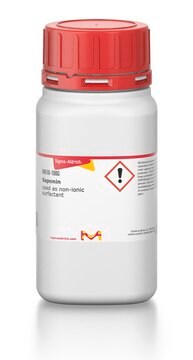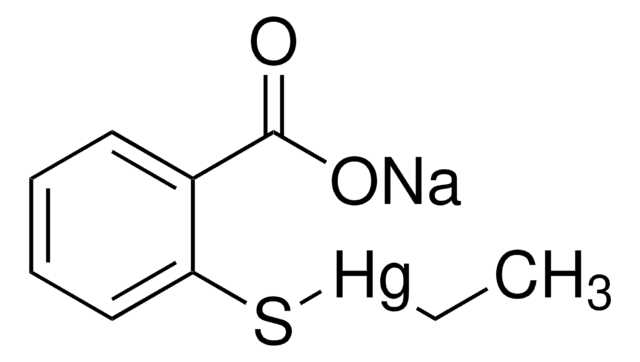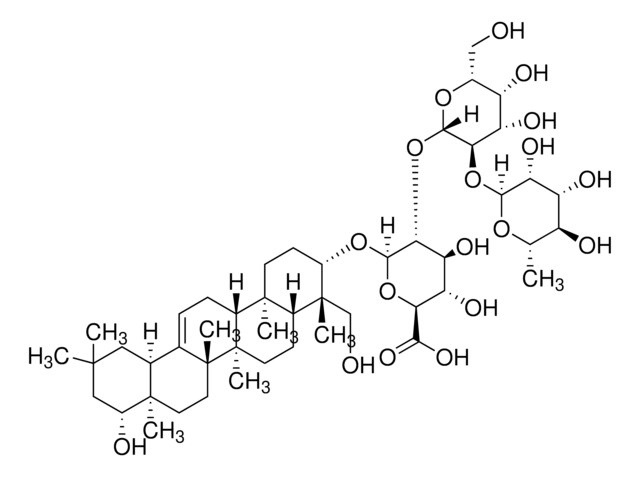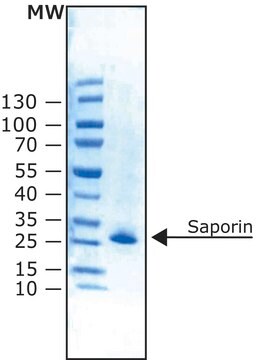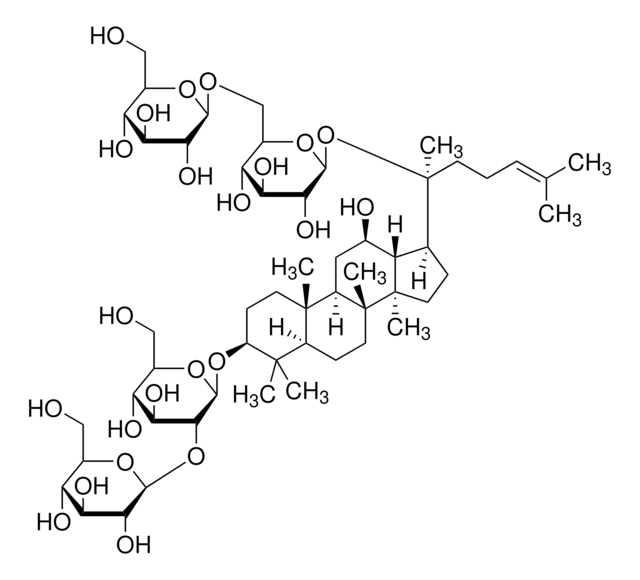Wichtige Dokumente
S7900
Saponin aus Quillaja Rinde
Sapogenin content ≥10 %
About This Item
Empfohlene Produkte
Beschreibung
non-ionic
Zusammensetzung
Sapogenin content, ≥10%
Methode(n)
HPLC: suitable
protein quantification: suitable
Sulfatasche
<20%
SMILES String
O1[C@H]([C@@H]([C@H]([C@@H]([C@H]1CO)O)O)O)O[C@H]2[C@@H](O[C@@H]([C@H]([C@@H]2O)O[C@@H]8O[C@@H]([C@H]([C@@H]([C@H]8O)O)O)CO)C(=O)O)O[C@@H]3[C@@](C4[C@@](C5[C@]([C@@]6(C[C@H]([C@]7([C@H]([C@@H](C(CC7C6=CC5)(C)C)OC(=O)\C(=C/C)\C)OC(=O)C)CO)O)C)(CC4)C)(CC3)C
InChIKey
AXNVHPCVMSNXNP-ZELRDNAQSA-N
Suchen Sie nach ähnlichen Produkten? Aufrufen Leitfaden zum Produktvergleich
Allgemeine Beschreibung
Anwendung
- to stain CD4+ and CD8+ T-cells
- to lyse trophozoite-infected red blood cells
- in immunohistochemical staining
Biochem./physiol. Wirkung
Signalwort
Warning
H-Sätze
Gefahreneinstufungen
Eye Irrit. 2 - STOT SE 3
Zielorgane
Respiratory system
Lagerklassenschlüssel
11 - Combustible Solids
WGK
WGK 2
Flammpunkt (°F)
Not applicable
Flammpunkt (°C)
Not applicable
Persönliche Schutzausrüstung
dust mask type N95 (US), Eyeshields, Gloves
Hier finden Sie alle aktuellen Versionen:
Besitzen Sie dieses Produkt bereits?
In der Dokumentenbibliothek finden Sie die Dokumentation zu den Produkten, die Sie kürzlich erworben haben.
Kunden haben sich ebenfalls angesehen
Unser Team von Wissenschaftlern verfügt über Erfahrung in allen Forschungsbereichen einschließlich Life Science, Materialwissenschaften, chemischer Synthese, Chromatographie, Analytik und vielen mehr..
Setzen Sie sich mit dem technischen Dienst in Verbindung.


